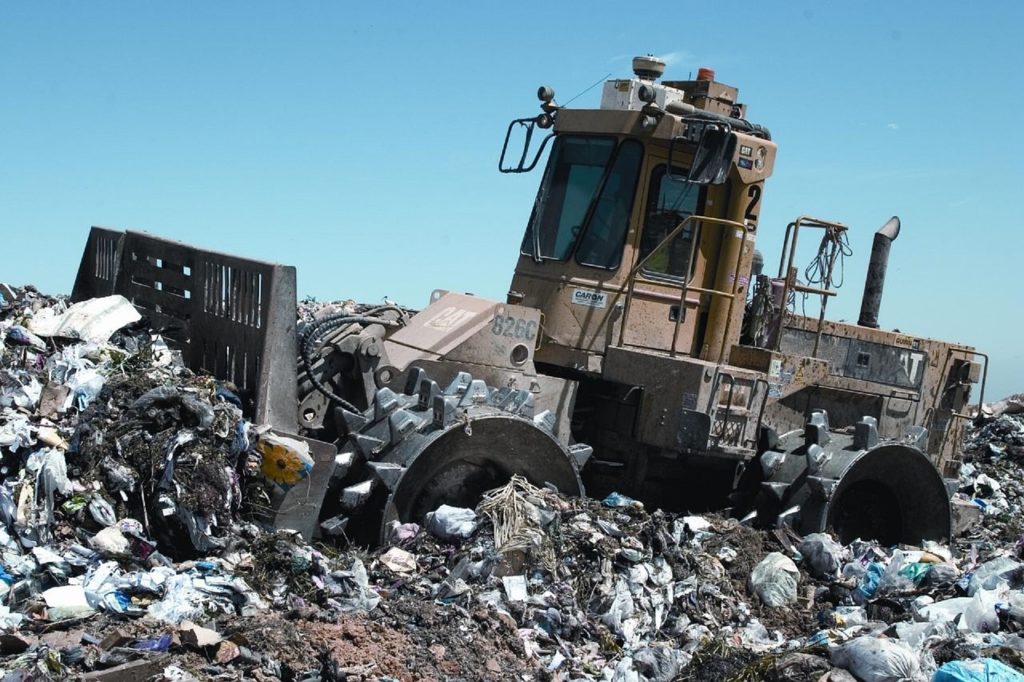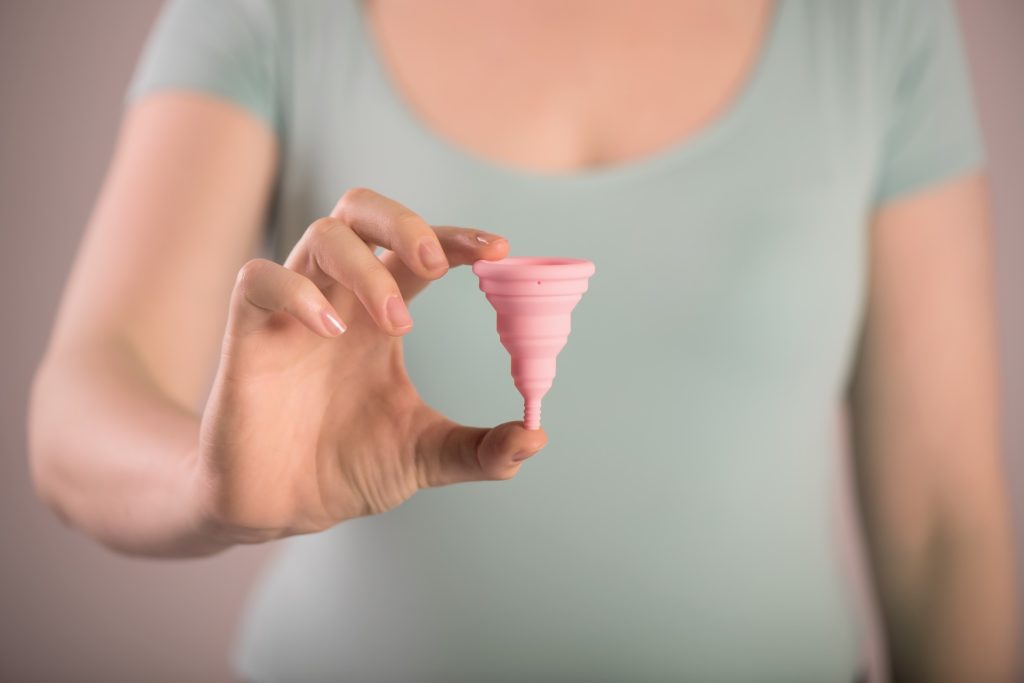Monthlies have been a taboo for years. As a humankind, we’ve grown from believing menstruation to be a punishment from the Gods, to using the blood as an ingredient for different medicines, to using papyrus pads and loincloths, to finally using first mass-produced disposable pads in 1888. Nowadays, periods are slowly becoming a common topic. However, waste management still isn’t and that’s why we need to talk about female hygiene product alternatives.
The problem we call “menstrual waste”
Have you heard of the term ‘Menstrual pollution’? It’s a thing. And it’s becoming more and more apparent day in and day out.
In 2011 alone, in India, the estimated menstrual waste that mostly included used sanitary napkins counted nine thousand tonnes. On a global level, females produce 200,000 tonnes of waste per annum in pads, tampons, and pantiliners. During her lifetime a woman disposes of 11,000 menstrual products or 136kg of waste (300 pounds). A year’s worth menstrual waste leaves a carbon footprint of 5.3 kg CO2.
So, besides the quantity in which they’re used and poor waste management, what else makes these products non-sustainable?
Why is cotton bad for us?
The world’s dirtiest crop. If we think about the environmental impact of cotton, we ought to discuss the excessive water consumption and the chemical pollution that stems from pesticides and fertilizers used in the production.
This WWF video perfectly illustrates the problem.
Why is white a bad color choice for female sanitary products?
Dioxin is used to bleach white most sanitary napkins we have on the market. This chemical is not only a toxic environmental pollutant but also damages the immune system, disrupts reproductive health and causes hormonal imbalance and cancer. So why is it even being used?
Can we avoid plastic?
Polypropylene and polyester are plastic-based materials that make up for about 90% of female hygiene products. There’s plastic in a tampon, too. It’s there to strengthen its structure, help application and stop microfibers of shedding. However, the fibers do shed and they leave microscopic marks on the vaginal wall which can cause TSS. Oh, and tampons also disrupt vaginal pH balance which can lead to rashes and infections.
Additionally, one-time plastic applicators oftentimes go with tampon packs. If you buy tampons with cardboard applicators, they will still be plasticized with chemicals like BPA, BPS, phthalates, and DEHP that can respectively affect embryonic development, cause heart disease and cancer and affect gene expression.
Besides, the discards include the plastic package. Sometimes menstrual waste ends up in landfills, sometimes in river flows, sometimes combined with household garbage and sometimes burned.
I went through tens of articles criticizing poor waste management in developing countries and demanding improvement. It made me think about where my waste goes. Is our waste management system any better?

Some females face greater issue: availability.
The female sanitary situation on a global level or the lack thereof is a serious issue for many girls and women. According to a UNESCO report on Menstrual hygiene management, every tenth schoolgirl in Africa is forced to miss school every month because of the lack of access to adequate female care products. They are consequently absent on average four days a month. In Kenya, puberty makes one million girls skip school or drop out. During their periods, they try to use whatever they can find: wool, old cloth, rag, tissue, even grass, and leaves. In Ghana alone, 11.5 million ladies don’t have access to sanitation management facilities. On a global level that makes up 40% of the population. Only 12% of females in India have access to female sanitary products. And the list goes on.
Many organizations work on getting closer to 2020 Sustainability goals, providing girls without access to sanitary products with cleaner, more sustainable solutions than the ones they’ve had. One of them is SHE, a social enterprise that helps women start their own business making pads from banana fiber. In this way, SHE empowers women to bring economic and social change into their communities. Afripads take it to the next level, producing female hygiene product alternatives – reusable sanitary pads.
However, in the rest of the world, where women are lucky enough to have adequate sanitary facilities and affordable product prices – waste management is still an issue.
Should we let it burn?
When sanitary napkins and other sanitary products are set on fire, they release dioxin and furan, both byproducts of burning materials bleached with chlorides, and both equally cancerogenic. The Indian government advises deep burial in remote areas as a waste management alternative over burning the trash in incinerators. Furthermore, incinerators are being highly discouraged because of the pollution – they release heavy metals and acid gases.
What is the price of our periods?
Affordable prices, as I previously mentioned, aren’t that affordable if you do the math. Whether you call it the tampon tax, the pink tax or the period tax, it will shock you how much you annually spend just buying menstrual products. Here’s how to calculate it:
20 pieces x cost of products/unit x 13 times = annual cost
annual cost x 38 years = lifetime cost
-
- 13 periods a year (because of a 28-day cycle)
- 38 years of periods (menopause starts roughly at age 51)
-
- 20 sanitary products per cycle (3-7 day periods)
- Tampons and towels/unit cost depends on your country of origin
I usually spend 8€ per period, which makes it 104€ a year and 3,952€ in a lifetime! That’s a lot of money and a lot of waste!
Let’s talk alternatives
But what about the waste? How can we prevent it?
You can avoid individually wrapped pads. If you buy tampons without the applicator, that’s almost 60% less waste. Although, if you’re set on using one, you could buy Dame applicator that’s washable and reusable. However, if you’re really environmentally conscious, this won’t be good enough for you.
Can periods really be plastic-free?
What are female hygiene product alternatives? A company called Nastracare produces compostable, biodegradable, plastic-free sanitary products which yearly use generates 35% lower carbon footprint. They make 100% plastic free tampons of organic cotton and pack them in recyclable plastic and biodegradable wax paper.
Another company worth of mention is TOTM. They have a similar offer, except that they also provide menstrual cups.

What about sustainable female hygiene product alternatives?
1. Menstrual cups
Menstrual cups are far less likely to cause TSS because they collect blood rather than absorb it. They don’t compromise the natural pH of the vagina because they don’t absorb the body moisture and they aren’t bleached.
What is a menstrual cup and is it plastic? The menstrual cup is a female hygiene product made of silicone. You use it similarly to a tampon to collect the blood. However, you’d have to boil it after every period and you’d be able to reuse it for up to 5 years. Silicone is a flexible material, a lot like the rubber, and it’s a hybrid between rubber and plastic polymer.
How safe is silicone as a material? It turns out it’s not entirely inert and can discharge toxic compounds. It doesn’t biodegrade and its recyclability rate is low (only specialized facilities can recycle it). As most menstrual cups are made of silicone, we can’t describe using menstrual cups as sustainable. However, it’s the best solution we have on the market for now. It cuts down the waste, that’s for sure.
Since 1937, when the first menstrual cup was patented, they became more well-known, more popular, and better designed. On Kickstarter, you can even find Looncup, a smart menstrual cup that lets you know when you need to empty it.
2. Reusable pads
If you don’t favor the tampons and can’t imagine using the cup, there are other female hygiene product alternatives. These pads are washable and reusable, and they have a waterproof liner for additional protection. Reusable cloth pads have alternatives in sanitary products made from materials like banana fiber, bamboo fiber, sea sponges, water hyacinth, and so on. These materials decompose six months after the use.
3. Menstrual panties
The last but not the least are the period panties. They are specially designed to be able to absorb the liquid. The pad is directly incorporated into the lining. They’re waterproof as well as odor-proof. Some are made out of bamboo and merino wool – antimicrobial and long-lasting. Period undies usually hold up to 2 tampons worth and for those days of the month, you can also find them in the shape of yoga pants.
If you’d like to hear other women’s experience with menstrual cups and reusable pads, you can find interviews I did with several lovely ladies.
If you’ve decided to buy a menstrual cup, try to get it from your local provider. In this way, less CO2 will find its way to the atmosphere.
What are your thoughts on the topic? Are you considering the alternatives or are you already using some of the products?


2 thoughts on “ Sustainable female hygiene: What no one tells us about product alternatives ”